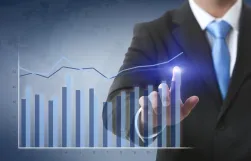As campaigning for the 2020 presidential election heads into its final months, political ad spending will hit an all-time high, according to eMarketer. Total political ad spending in the 2019/2020 election cycle will reach $6.89 billion.
Political ad spending fluctuates dramatically from year to year, spiking in even years and dipping in odd years. This cycle’s spending is 63.3% higher than spending in the 2015/2016 season, underscoring the intensity of not only the presidential race, but races for congressional seats as well.
TV still dominates political advertising. This cycle, it will reach $4.55 billion. That means in the 2019/2020 cycle, spending on political TV ads will account for 3.2% of all TV advertising and 66.0% of all political ad spending. TV’s share of political advertising is up a bit from the prior election year, as it takes share from radio and print.
Political spending on digital platforms is far less than on TV. In the 2019/2020 election season, it will grow to $1.34 billion. It makes up 19.4% of all political advertising and 0.5% of all digital spending. Digital jumps 203% over the 2015/16 presidential election season, when spending was $440 million.
It’s widely known that Google and Facebook control 60.8% of the total US digital ad market. When it comes to political advertising, the duopoly has an even tighter grip, with a combined 77.6% this cycle. Facebook is the dominant digital platform for political ads, capturing a 59.4% share during the 2019/2020 election cycle. That equates to $796.8 million.
Google is No. 2 among political advertisers, capturing 18.2% of all digital political spending during 2019/2020. That equates to $243.7 million. While eMarketer does not break out Google’s political ad revenue by format, they estimate that most money spent on display ads goes to YouTube.
Search spending on Google is fairly steady throughout the election season, as candidates seek to have their names appear at the top of search results. Display and video ad buying usually spikes a bit closer to the election, as campaigns buy ads to persuade voters to cast ballots.



















